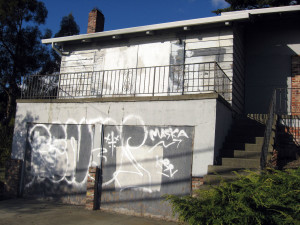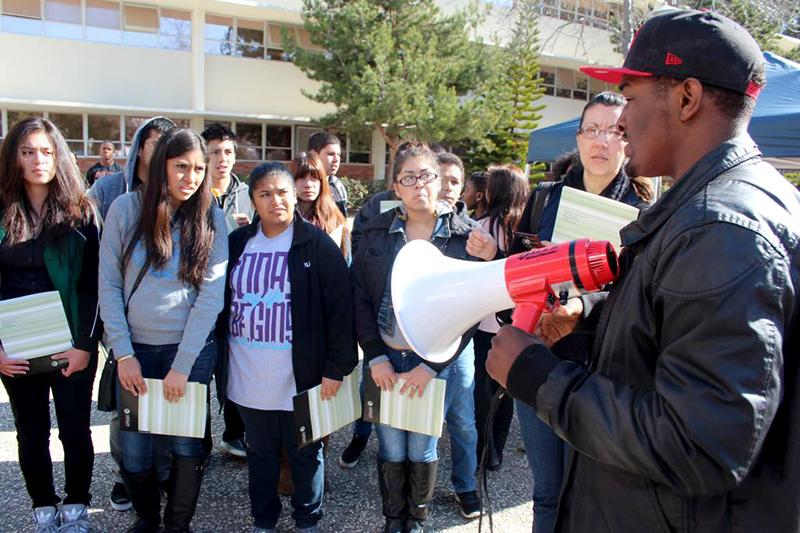 Northern California has its fair share of ghost towns, and although Hayward may not be on track to becoming the next Alviso or New Idria, an increasing number of houses and businesses have become abandoned.
Northern California has its fair share of ghost towns, and although Hayward may not be on track to becoming the next Alviso or New Idria, an increasing number of houses and businesses have become abandoned.
In fact, the tallest building in town, the Centennial Tower on Foothill Boulevard, already stands vacant, and plans for redevelopment have been shelved.
Despite the fact that home ownership rates are the lowest they have been in more than a decade, foreclosures are on the rise and demand is on the decline.
That is, demand among people who can actually still afford to buy a home.
The San Francisco Chronicle reports that 1,790 homeowners in Alameda County were notified by their banks that their mortgages had fallen into default in the month of July alone.
According to foreclosure.com, there are currently 1,440 houses in Hayward listed in foreclosure—over three percent of the total number of houses in the city.
Michelle Starratt, Assistant Housing Director of Alameda County’s Community Development Agency (ACCDA), has seen firsthand how the bad economy over the last few years has left “a huge number of vacant properties.”
The county has been overwhelmed with people in need of housing assistance.
Despite being one of only three California municipalities to qualify for the Neighborhood Stabilization Program 2 that was introduced as part of President Obama’s federal stimulus, “the funding source has dried up.”
For many East Bay residents, the situation is now dire.
In a sign of the times, the ACCDA has been forced to expend a considerable amount of its budget maintaining dilapidated and abandoned properties across the county.
Back in March, a fire in the Centennial Tower drew more than a dozen fire engines from all over the county.
Starratt believes the impetus of this real estate crisis stems from errant loans given by banks to prospective homeowners during the past two decades.
Historically, home loans required a down payment of 5 to 10 percent of the house’s value and proof of steady income—“not anyone could walk in the door and get a loan.”
During the 1980s elements of the Glass-Steagall Act, which was passed by Congress during
the Great Depression, were suspended.
Just as in the 1920s, banks and investors believed that the good economic times would last forever. The result was rampant deregulation, and what we now known to have been a bubble which was bound to burst.
“Tons of loans were made. They didn’t care if people could afford it or not,” stated Starratt, who believes that as many as 90 percent of bank loans given during the height of the bubble were made in error.
To make matters worse, many banks—at the behest of investment bankers and hedge fund —signed perspective homeowners into mortgages that they would have had trouble keeping up with, even in a good economy.
Lessons have been learned, or relearned. Subprime lending has been severally cut back since 2008, and the 2009 Wall Street Reform and Consumer Protection Act has reeled in predatory lending.
“We have learned a harsh lesson about the dire consequences a financial crisis has for ordinary Americans,” said Janet Yellen, President of the Federal Reserve Bank of San Francisco. “Those of us charged with overseeing the financial system should always keep this human cost in mind.”
With the U.S. Department of Labor’s report that Alameda County’s unemployment rate jumped from 5 percent at the beginning of 2008 to 11.6 percent where it sits today,
it is no wonder why so many people have lost their homes and why so many business have closed their doors.
The down economy has not only affected homeowners—rental properties have also been affected.
“They’re up and down. The economy has definitely affected them. There’s more vacancies,” said Lisa Perrault of Nor Cal Realty in Hayward, regarding rental property.
When people cannot own property or even rent it, where do they go? If they are lucky, they can turn to family or government programs.
However, the current waitlist to receive aid from the Housing Authority of Alameda
County is completely filled up.
It may take a turnaround in the economy to alleviate East Bay housing needs. In the meantime, there are a growing number of people who are running out of options.

















